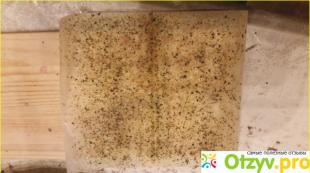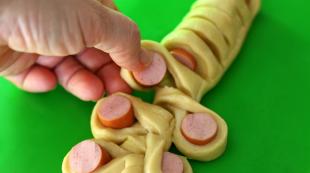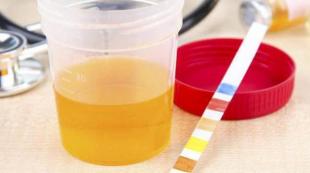Depreciation of fixed assets is carried out. Accounting for depreciation of fixed assets
METHODS OF CALCULATING DEPRECIATION OF FIXED ASSETS
Depreciation can be calculated only in those ways that are permitted for use. Currently, depreciation of fixed assets in Russia is carried out in one of the following ways:
· in a linear way;
· reducing balance method;
· the method of writing off the cost by the sum of the numbers of years of useful life;
· the method of writing off the cost in proportion to the volume of products (works);
· accelerated depreciation method (increasing the amount of deductions using the straight-line method).
The use of one of the methods for a group of homogeneous fixed assets is carried out throughout its entire useful life.
Linear method is one of the most common. It is used by approximately 70% of all businesses. The popularity of the linear method is due to its ease of use. Its essence is that every year an equal part of the cost of this type of fixed asset is depreciated.
The annual amount of depreciation is calculated as follows:
Where A– annual amount of depreciation charges; WITH first – On- rate of depreciation.
For example, a company bought a computer. The cost was 10,000 rubles, the service life was 5 years. Thus, annually we will write off 10,000/5 = 2,000 rubles for depreciation:
| Year | Residual value at the beginning of the year (RUB) | Amount of annual depreciation (RUB) | Residual value at the end of the year (RUB) |
| 1 | 10 000 | 2 000 | 8 000 |
| 2 | 8 000 | 2 000 | 6 000 |
| 3 | 6 000 | 2 000 | 4 000 |
| 4 | 4 000 | 2 000 | 2 000 |
| 5 | 2 000 | 2 000 | 0 |
The following should be noted. If the residual value of an asset is zero, this does not mean the price of the computer has become zero. This computer can have real value, be in working condition and last for many more years. The zero residual value of this computer only means that the company fully compensated for the costs of its acquisition (Fig. 5).

The linear method is advisable to use for those types of fixed assets where time, and not obsolescence (obsolescence), is the main factor limiting service life.
At reducing balance method The annual amount of depreciation is determined based on the residual value of the fixed asset item at the beginning of the reporting year and the depreciation rate calculated on the basis of the useful life of this item:

Where From ost– residual value of the object; To– acceleration coefficient; On– depreciation rate for a given object.
For example, an enterprise bought a machine, the cost of which is 120,000 rubles, the service life is 8 years. The acceleration factor is 2. Thus, the annual depreciation amount, taking into account acceleration, will be 25% (100%: 8 × 2). The calculation of depreciation is presented in the table:
|
Depreciation rate, % |
||||
It should be noted that with this method the original cost will never be written off. In our example, in the last year of depreciation there is a balance of 12,013 rubles. Despite this drawback, the method allows you to write off the maximum depreciation value in the first years of operation of the asset (Fig. 6). Thus, the enterprise has the opportunity to most effectively reimburse the costs of acquiring fixed assets.

When writing off the cost by the sum of the numbers of years of useful life the annual amount of depreciation is determined based on the original cost of the fixed asset and the annual ratio, where the numerator is the number of years remaining until the end of the asset’s service life, and the denominator is the sum of the numbers of years of the asset’s service life:

Where WITH first – initial cost of the object; T ost– the number of years remaining until the end of the useful life; T– useful life.
For example, equipment worth 100,000 rubles was put into operation. Useful life is 5 years. The sum of the numbers of the period of use is 15 (1+2+3+4+5). We present the calculation in the table:
|
Residual value at the beginning of the year (RUB) |
Depreciation rate, % |
Amount of annual depreciation (RUB) |
Residual value at the end of the year (RUB) |
|
|
100000´5/15=3333 |
||||
|
100000´4/15=2667 |
||||
|
100000´3/15=2000 |
||||
|
100000´2/15=1333 |
||||
|
100000´1/15=667 |

This method is equivalent to the reducing balance method, but makes it possible to write off the entire cost of the object without a balance (Fig. 7).
During the reporting year, depreciation charges for fixed assets are accrued monthly, regardless of the accrual method used, in the amount of 1/12 of the annual amount.
At method of writing off the cost in proportion to the volume of products (works) depreciation charges are calculated based on the natural indicator of the volume of production (work) in the reporting period and the ratio of the initial cost of the fixed asset item and the expected volume of production (work) for the entire useful life of the fixed asset item:
Where A– the amount of depreciation per unit of production; WITH– the initial cost of the fixed asset; IN– estimated volume of production.
This method is used where the depreciation of fixed assets is directly related to the frequency of their use.
Most often, the method of writing off cost in proportion to the volume of production is used to calculate depreciation in the extraction of natural raw materials.
Let's assume that the ore reserves of this deposit are 1,000,000 tons. The cost of fixed assets used in ore mining is 16,000,000 rubles.
Depreciation per unit of production is 16,000,000/1,000,000 = 16 rubles/t.
If it is planned to extract 100,000 tons of ore annually, then the annual depreciation will be 16 ´ 10,000 = 160,000 rubles, and with annual mining
5,000 t – 16 ´ 5,000 = 80,000 rub.
Method for calculating depreciation proportional to the volume of work used primarily for vehicles. Depreciation rates are set as a percentage of the original cost of the vehicle for every 1000 km driven.
Accelerated depreciation method. In order to create financial conditions for accelerating the introduction of scientific and technical achievements into production and increasing the interest of enterprises in accelerating the renewal and technical development of the active part of fixed production assets (machinery, equipment, vehicles), enterprises have the right to use the method of accelerated depreciation of the active part of production fixed assets, entered into force after January 1. 1991
Accelerated depreciation is a targeted method of faster, in comparison with the standard service life of fixed assets, the complete transfer of their book value to production and distribution costs.
Enterprises can apply the accelerated method of calculating depreciation in relation to fixed assets used to increase the production of computer equipment, new advanced types of materials, instruments and equipment, and expand product exports in cases where they are massively replacing worn-out and obsolete equipment with new, more productive ones.
When introducing accelerated depreciation, enterprises use a uniform (linear) method of calculation, while the rate of annual depreciation deductions for full restoration approved in the prescribed manner (for the corresponding inventory item or their group) increases, but not more than twice.
Accelerated depreciation allows you to speed up the process of updating fixed assets at the enterprise; accumulate sufficient funds for technical re-equipment and reconstruction of production; reduce income tax; maintain fixed assets at a high technical level
Test control
1. It is advisable to use the linear depreciation method if1. The concept of depreciation, depreciation charges
During operation, the OS wears out. A distinction is made between moral and physical wear and tear of the operating system.
Obsolescence- this is a partial loss of OS of their consumer value under the influence of technical progress and improvement of the production process.
Physical deterioration- loss of the OS of its original technical and operational qualities.
Physical wear and tear is subject to accounting.
The cost of fixed assets is repaid through depreciation. Depreciation- this is the inclusion of a worn-out part of the OS in production costs.
Depreciation is not charged on:
Housing assets, except those leased and included in income-generating investments in material assets;
Land plots and environmental management facilities;
Library collections;
OS objects of non-profit organizations;
Objects classified as museum collections.
Depreciation charges for an object of fixed assets begin on the first day of the month following the month of commissioning and acceptance of this object for accounting, and are accrued until the cost of this object is fully repaid or it is written off from accounting.
Accrual of depreciation on an object stops on the first day of the month following the month of full repayment of the cost of the object or its write-off from accounting.
Depreciation of fixed assets is calculated taking into account the following factors:
- initial cost;
- useful life of each type of fixed assets;
- method of calculating depreciation.
The useful life of fixed assets is determined upon their delivery for registration based on:
The expected life of the facility in accordance with the expected productivity or capacity;
Expected physical wear and tear, depending on the operating mode (number of shifts), natural conditions and the influence of an aggressive environment, the repair system;
Regulatory and other restrictions on the use of this object (for example, rental period).
All depreciable property is distributed into depreciation groups in accordance with its useful life.
Depreciable property is combined into the following depreciation groups:
Group 1 - all short-lived property with a useful life from 1 year to 2 years inclusive;
Group 2 - property with a useful life of more than 2 years up to 3 years inclusive;
Group 3 - property with a useful life of more than 3 years up to 5 years inclusive;
Group 4 - property with a useful life of over 5 years up to 7 years inclusive;
Group 5 - property with a useful life of over 7 years up to 10 years inclusive;
Group 6 - property with a useful life of over 10 years up to 15 years inclusive.
Group 7 - property with a useful life of over 15 years up to 20 years inclusive.
Group 8 - property with a useful life of over 20 years up to 25 years inclusive.
Group 9 - property with a useful life of over 25 years up to 30 years inclusive.
Group 10 - property with a useful life of over 30 years.
2. Methods for calculating depreciation in accounting. Procedure for calculating depreciation
Depreciation of fixed assets in accounting is calculated in one of the following ways:
- linear - consists of evenly accruing depreciation over the useful life of the object.
Example: OS - 30,000 rubles, useful life - 5 years:
The annual depreciation rate will be 100% /5 years = 20%
The annual depreciation amount will be 30,000 * 20/100 = 6,000 rubles
Reducing balance- is determined based on the residual value of the fixed asset, accepted at the beginning of each reporting year, and the depreciation rate calculated when registering the fixed asset, based on its useful life and the acceleration factor established in accordance with the legislation of the Russian Federation.
Example: fixed assets - 30,000 rubles, useful life - 5 years, salvage value - 1,000 rubles. The annual depreciation rate is 20%, and with accelerated depreciation it is 20%*2=40%
|
Period |
Annual depreciation amount |
Accumulated wear |
Residual value |
|
End of 1st year |
30000*40%=12000 |
12000 |
18000 |
|
End of 2nd year |
18000*40%=7200 |
19200 |
10800 |
|
End of 3rd year |
10800*40%=4320 |
23520 |
6480 |
|
End of 4th year |
6480*40%= 2592 |
26112 |
3888 |
|
End of 5th year |
2888 |
29000 |
1000 |
Write-off of cost based on the sum of numbers of years of useful life- determined based on the initial cost of the fixed asset and the calculated coefficient.
Example: The initial cost of the object is 30,000 rubles, useful life is 5l:
The sum of the numbers of years of service life is 1+2+3+4+5=15
Depreciation amount
In 1 year 30000*5/15=10000 rub
in year 2 30000*4/15
in year 3 30000*3/15=6000
in year 4 30000*2/15=4000
in year 5 30000*1/15= 2000
- method of calculating depreciation depending on the volume of production. With this method, the annual amount of depreciation is determined by multiplying the percentage calculated as the ratio of its original cost to the expected volume of output of products or work over its useful life by the actual volume of production or work performed for a given period.
Example: initial cost - 24,000. Useful life 5 years. Estimated production volume - 120,000:
24000/120000*100=20% - percentage of annual depreciation
|
Period |
Actual production output |
Annual depreciation amount |
Accumulated wear |
Residual value |
|
1 year |
20000 |
20000*20%=4000 |
4000 |
20000 |
|
2 year |
25000 |
25000*20%=5000 |
9000 |
15000 |
|
3 year |
30000 |
30000*20%=6000 |
15000 |
9000 |
|
4 year |
35000 |
35000*20%=7000 |
22000 |
2000 |
|
5 year |
10000 |
10000*20%=2000 |
24000 |
3. Synthetic accounting and analytical accounting of depreciation of fixed assets
Accounting for depreciation of fixed assets is carried out on a passive, balance, regulating account 02 “Depreciation of fixed assets”
Credit balance - reflects the amount of accrued depreciation of all fixed assets of the enterprise and at the same time the amount of their reimbursed value through depreciation charges.
Debit turnover - the amount of accrued depreciation for the reporting period
Debit turnover - depreciation amounts for retired fixed assets.
Account 02 has two sub-accounts:
02.1 - “Depreciation of own fixed assets”;
02.2 - “Depreciation of property leased.”
The amounts of accrued depreciation of fixed assets are included monthly in production and distribution costs - D T 20,25,26,44 K T 02.
The write-off of the amount of accrued depreciation upon disposal of fixed assets is reflected by posting D T 02 K T 01.
The amount of accrued depreciation on account 02 is a source of long-term investments in fixed assets, their reconstruction, and technical re-equipment.
4. Procedure for calculating depreciation for tax purposes
The Tax Code of the Russian Federation provides for the use of two methods for calculating depreciation of fixed assets for tax purposes:
1. linear method - applies to buildings, structures, transmission devices included in depreciation groups 8-9, regardless of the commissioning period of these objects.
When applying the linear method, the amount of accrued depreciation for one month is determined as the product of its original cost (replacement) cost and the depreciation rate determined for the given object.
The depreciation rate for each item of depreciable property is determined by the formula:
K = 1 / n * 100%,
Where K is the depreciation rate as a percentage of the original cost,
n is the useful life expressed in months.
2. non-linear method - the amount of monthly depreciation in relation to depreciable property is determined as the product of the total balance of the depreciation group and the depreciation rate determined for this group.
Since 2009, with the non-linear method, depreciation must be calculated not for each object, but separately for each depreciation group according to the formula:
A = B * K: 100,
Where A is the amount of depreciation for the month for the corresponding depreciation group;
B is the total balance of the corresponding depreciation group;
K is the depreciation rate for the corresponding depreciation group.
Depreciation rates by group:
Group 1 - 14.3%
Group 2 - 8.8%
Group 3 - 5.6%
Group 4 - 3.8%
Group 5 - 2.7%
Group 6 - 1.8%
Group 7 - 1.3%
Group 8 - 1.0%
Group 9 - 0.8%
Group 10 - 0.7%.
Since depreciation must be calculated monthly, the total balance (cost of property) must be determined on the 1st day of each month. The cost of purchased fixed assets will increase the total balance of the corresponding depreciation group from the 1st day of the month following the plant’s commissioning.
The total balance for each depreciation group must be reduced monthly by the amount of depreciation accrued last month:
January 1 - 100000*8.8:100= 8800, 100000 - 8800 = 91200
February 1 - 91200* 8.8: 100 = 8025.60, 91200 - 8025.60 = 83174.40, etc.
Depreciation of fixed assets is carried out using one of the following methods of calculating depreciation charges:
Linear method;
Reducing balance method;
The method of writing off value by the sum of the numbers of years of useful life;
The method of writing off the cost is proportional to the volume of products (works).
One of the methods is applied to a group of homogeneous fixed assets throughout their entire useful life. The useful life of an item of fixed assets is determined by the organization when accepting the item for accounting.
During the useful life of an object of fixed assets, the accrual of depreciation charges is not suspended, except when the object is under reconstruction and modernization by decision of the head of the organization and its transfer to conservation for a period of more than three months.
Objects of fixed assets whose consumer properties do not change over time (land plots and environmental management facilities) are not subject to depreciation.
Fixed assets worth no more than 10 thousand rubles. per unit or other limit established in the accounting policy based on technological features, as well as purchased books, brochures and other publications are allowed to be written off as production costs (selling expenses) as they are released into production or operation.
During the reporting year, depreciation charges for fixed assets are accrued monthly, regardless of the accrual method used, in the amount of 1/12 of the annual amount.
In seasonal production, the annual amount of depreciation on fixed assets is accrued evenly during the period of operation of the organization in the reporting year.
Depreciation charges for an item of fixed assets begin on the 1st day of the month following the month in which this item was accepted for accounting, and cease on the 1st day of the month following the month of full repayment of the cost of the item or its write-off.
In practice, the amount of depreciation for the reporting period is determined as follows: to the amount of depreciation accrued last month, add the amount of depreciation from the cost of received fixed assets for the last month and subtract the amount of depreciation from the cost of fixed assets retired last month.
The organization has the right to choose the method of calculating depreciation. However, for tax purposes, depreciation charges on fixed assets are calculated in accordance with Articles 258 and 259 of Chapter 25 of the Tax Code of the Russian Federation:
Depreciable property is divided into 10 groups in accordance with its useful life;
The taxpayer calculates depreciation using the straight-line or non-linear method.
With the linear method, the amount of depreciation per month is determined by multiplying the original cost of the object by the depreciation rate for the given object, and with the non-linear method, by multiplying the residual value of the object by the depreciation rate for the corresponding object.
The linear method of calculating depreciation is used for buildings, structures, transmission devices included in groups 8 - 10 of depreciable property; for the remaining depreciable property, the organization has the right to apply any of the two indicated methods of calculating depreciation.
To account for depreciation of fixed assets, passive account 02 “Depreciation of fixed assets” is used, intended to summarize information about depreciation accumulated during the operation of fixed assets.
The accrued amount of depreciation on own fixed assets for production purposes is reflected in the debit of the accounts of production and distribution costs (23 “Auxiliary production”, 25 “General production expenses”, 26 “General expenses”, etc.) and the credit of account 02 “Depreciation of fixed assets”.
For fixed assets leased out on a current lease, the amount of depreciation is reflected in the debit of account 91 “Other income and expenses” and the credit of account 02 (if rent generates operating income), and for non-productive fixed assets - in the debit of account 29 “Service production and economy" and account credit 02.
Depreciation of fixed assets is carried out using one of the following methods of calculating depreciation charges:
linear method. Depreciation is calculated based on the original cost of the fixed asset and the depreciation rate calculated based on the useful life of this object.
reducing balance method. It is calculated based on the residual value of the object and the depreciation rate calculated from the useful life of this object.
a method of writing off the cost of an object based on the sum of the numbers of years of its useful life.
It is calculated based on the initial cost of the fixed asset item and the annual ratio, where the numerator is the number of years remaining until the end of the asset’s service life and the denominator is the sum of the number of years of the asset’s service life.
a method of writing off cost in proportion to the volume of production. It is accrued based on the ratio of the initial cost of the fixed asset item and the expected volume of production in physical terms for the entire useful life of the fixed asset item.
Depreciation charges for an object of fixed assets begin on the 1st day of the month following the month in which this object was accepted for accounting, and are accrued until the cost of this object is fully repaid or this object is written off from accounting in connection with the termination of ownership or other property rights.
Depreciation accrual stops on the 1st day of the month following the month of full repayment of the cost of the object or its write-off.
Account 02 “Depreciation of fixed assets” is intended to account for depreciation of fixed assets.
The amount of depreciation is reflected in the account D. The K-t account reflects the amount of accrued depreciation for the reporting period (D-t: 20,23,25,26,44 K-t 02)
Depreciation is not charged:
For fixed assets received under a gift agreement and free of charge during the privatization process
Productive livestock
Library fund
Land
Nature management facilities
8.Accounting for depreciation of intangible assets
When intangible assets are disposed of, their value is reduced by the amount of depreciation accrued during use.
Depreciation on intangible assets is accrued over the entire useful life.
For intangible assets for which it is impossible to determine the useful life, depreciation rates are established for 20 years (but not more than the life of the organization).
The amount of depreciation on intangible assets is reflected in account 05 “Amortization of intangible assets.” On the credit side of this account, depreciation is calculated, and on the debit side, depreciation is written off.
1. Depreciation on intangible assets has been calculated:
Debit of account 20 “Main production” (23 “Auxiliary production”, 25 “General production expenses”, 26 “General business expenses”, 08 “Investments in non-current assets”)
Credit to account 05 “Amortization of intangible assets”.
2. The amount of depreciation on retired intangible assets was written off:
Debit of account 05 “Amortization of intangible assets”
Credit to account 04 “Intangible assets”.
There are the following methods for calculating depreciation on intangible assets:
– linear method;
– reducing balance method;
– a method of writing off cost in proportion to the volume of products (works).
9. Accounting for inventories: concept, classification, assessment, documentary and synthetic accounting
Primary documents on the receipt and consumption of inventories are the basis for organizing material accounting. Directly based on primary documents, preliminary, current and subsequent control over the movement, safety and rational use of material resources is carried out.
Primary documents on the movement of materials must be carefully prepared and must contain the signatures of the persons who performed the transactions and the codes of the corresponding accounting objects. Control over compliance with the rules for registering the movement of material resources is entrusted to the chief accountant and heads of relevant departments.
Raw materials and materials come from suppliers, accountable persons who purchased materials on a cash basis, from the write-off of deteriorated fixed assets of their own production.
Monitoring the implementation of the logistics plan under contracts, the timely receipt and receipt of materials is carried out by the logistics department. For this purpose, the department maintains statements (machine diagrams) of operational records of the implementation of supply contracts.
The forwarder delivers the accepted cargo to the enterprise warehouse and hands it over to the warehouse manager, who checks the compliance of the quantity and quality of the material with the supplier’s invoice data.
Material values come in appropriate units of measurement (weight, volume, linear, numerical). If materials are received in one unit and consumed in another, then they are counted simultaneously in two units of measurement.
Receipt of materials of own manufacture, production waste, etc. into the warehouse is documented with one- or multi-line invoice requirements, which are issued by the delivery workshops in two copies: the first is the basis for writing off materials from the delivery workshop, the second is sent to the warehouse and is used as a receipt document. Materials received from the dismantling and dismantling of buildings and structures are accounted for on the basis of an act on the recording of material assets received during the dismantling and dismantling of buildings and structures.
To ensure control over the consumption of materials and its correct documentation, organizations carry out appropriate organizational measures. An important condition for monitoring the rational use of materials, for example, is their rationing and release based on established limits. Limits are calculated by supply departments based on data from the planning department on the volume of production and standards for material consumption per unit of production.
The procedure for documenting the release of materials depends primarily on the organization of production, the direction of consumption and the frequency of their release.
The consumption of materials released into production and for other needs on a daily basis is recorded using limit cards.
Materials are released from warehouses within the established limit.
If materials are released from the warehouse infrequently, then their release is formalized with one- or multi-line requirements-invoices for the release of materials, which are issued by the receiving workshop in two copies: the first, with the warehouseman’s receipt, remains in the workshop, the second, with the recipient’s receipt, remains with the warehouseman.
To record the movement of materials within an enterprise, single-line or multi-line invoice requirements are used.
The release of materials to third-party organizations or farms of their organization located outside of it is documented with invoices for the release of materials to the outside, which are issued by the supply department in two copies on the basis of orders, contracts and other documents: the first copy remains in the warehouse and is the basis for analytical and synthetic accounting for materials, the second is transferred to the recipient of the materials. If materials are issued with subsequent payment, then the first copy is also used for the accounting department to issue settlement and payment documents.
When transporting materials by road, a consignment note is used instead of a consignment note.
Instead of primary documents on material consumption, you can use material accounting cards.
In small organizations, the release of materials for the production of products and the provision of services is carried out without registration of special documents.
Synthetic accounting of production inventories is carried out, as already noted, on synthetic accounts 10 “Materials”, 11 “Animals for growing and fattening”, 14 “Reserves for reducing the cost of material assets”, 15 “Procurement and acquisition of material assets”, 16 “Deviation in cost of materials."
On synthetic accounts, material assets are recorded at actual cost or at accounting prices. When accounting for materials at actual cost, the debit of material accounts includes all expenses for their acquisition.
When materials are received, material account 10 “Materials” is debited and credited:
account 60 “Settlements with suppliers and contractors” -;
accounts 66 “Settlements for short-term loans and borrowings” and 67 “Settlements for long-term loans and borrowings” - for the amount of accrued interest on loans and borrowings used for the purchase of materials;
account 76 “Settlements with various debtors and creditors” - for the cost of services paid by checks to transport (railway and water) organizations;
account 71 “Settlements with accountable persons” - for the cost of materials paid from accountable amounts;
account 23 “Auxiliary production” - for the costs of delivering materials by own transport and for the actual cost of materials of own production;
account 20 “Main production” - for the cost of returnable waste;
other accounts.
10.Accounting for production costs
Costs included in the cost of products, works, services
The composition of costs included in the cost price can be briefly described as follows:
· costs associated with the production process and the provision of services to consumers, including material costs and labor costs for workers involved in the production process;
· costs of preparation and development of production;
· accumulative costs directly related to the improvement of technology and production organization;
· costs of servicing the production process: to provide production with raw materials, materials, etc.; for the maintenance of fixed assets;
· costs of ensuring normal working conditions and safety precautions;
· costs associated with production management: maintenance of management staff; operating costs for maintaining buildings and premises; payment for communication services, computer centers, banks, etc.;
· costs associated with training and retraining of personnel;
· payments provided for by the labor legislation of the Russian Federation for time not worked in production: payment for regular and additional vacations; compensation for unused vacation;
· contributions to social funds;
· depreciation of fixed assets, intangible assets;
· costs of paying for the work of the customer service associated with ensuring the organization of contractual relations and servicing settlements between producers and consumers;
· taxes, fees, payments and other deductions;
· other types of costs included in the cost in accordance with the provisions established by law.
In addition, the cost includes:
· losses from marriage;
· losses from downtime due to internal production reasons;
· shortage of material assets in production and warehouses within the limits of natural loss and above the norms, if the culprit has not been identified.
Classification of production costs
In order to organize on-farm calculations and control, production costs are recorded in the following sections:
in relation to cost (direct and overhead (indirect));
by type of product, work, service;
by location of costs (productions, workshops, sites, etc.);
by types of expenses (elements and cost items).
Costs for economic elements include material costs, labor costs, social insurance and security contributions, depreciation of fixed assets and other expenses.
Costs grouped by costing items are broader in composition than elemental costs, since they take into account the nature and structure of production, creating a sufficient basis for analysis.
Basic costs are costs that are directly related to the production process of products, works, services (materials, wages and wages of workers, wear and tear of tools, etc.).
Overhead costs are the costs of managing and servicing the production process (general production and general business expenses).
Direct costs are costs that can be directly attributed to certain types of products, works, services (raw materials, supplies, semi-finished products, workers' wages, payroll charges, etc.).
Indirect costs are costs that simultaneously relate to all types of products (costs of lighting, heating, etc. general production and general business expenses).
Indirect costs at the end of the month are distributed between individual types of products, works, services in proportion to any base:
wages of production workers (for labor-intensive industries);
material costs (for material-intensive industries);
direct costs;
revenue from sales of certain types of products, works, services.
Variable costs are costs that are incurred in proportion to the volume of products produced (raw materials, supplies, salaries of main workers with accruals, semi-finished products, general production expenses).
Fixed costs - costs that do not depend on the volume of output (lighting, heating, salaries of management personnel, etc. general business expenses)
The Chart of Accounts provides for section 3 “Production Costs”, which combines accounts from 20 to 29. Including:
Account 20 “Main production”;
Account 21 “Semi-finished products of own production”;
Account 23 “Auxiliary production”;
Account 25 “General production expenses”;
Account 26 “General business expenses”;
Account 28 “Defects in production”;
Account 29 “Service production”.









